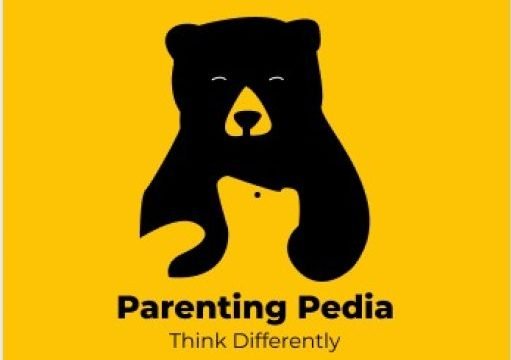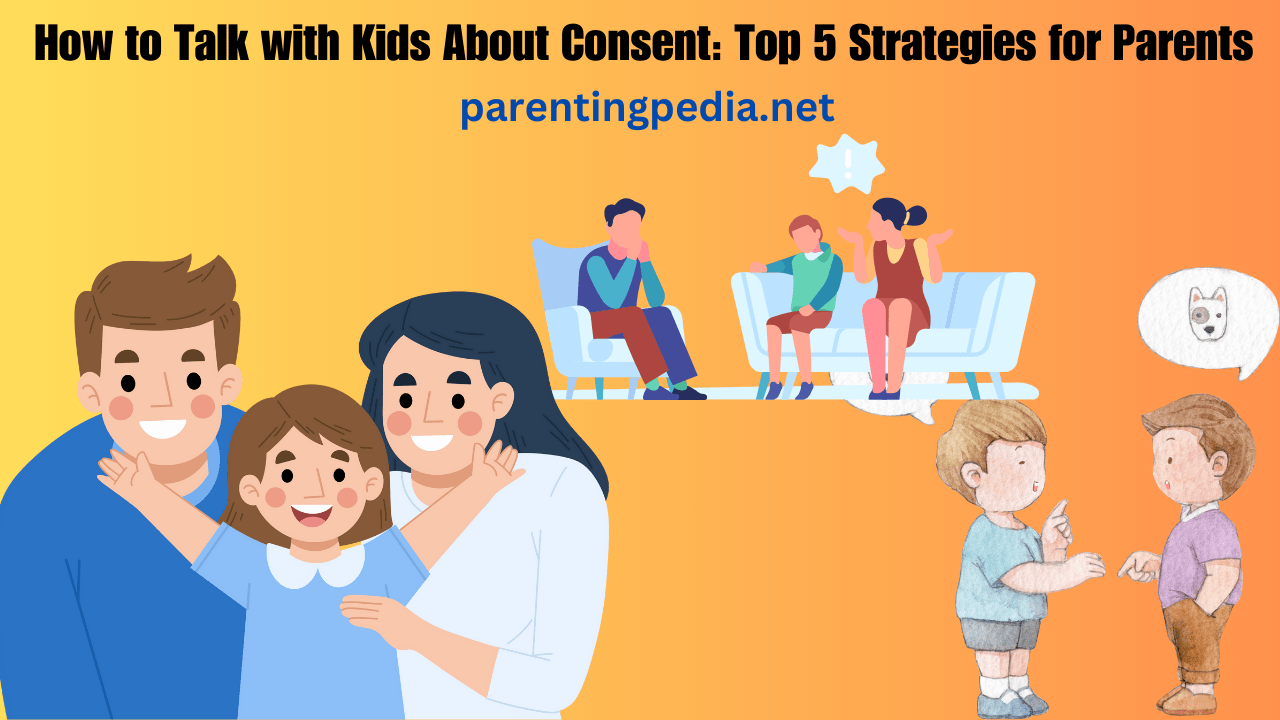In today’s world, where discussions about consent and boundaries are more critical than ever, it’s essential for parents and caregivers to guide their children through these conversations.
Teaching kids about consent is not just a one-time conversation but an ongoing process that helps them understand their rights, personal boundaries, and healthy relationships.
This blog post will explore the top 5 strategies for parents to talk to their kids about consent, sexual health, and body safety, ensuring that children of all ages receive the necessary guidance.
Why Is It Important to Teach Kids About Consent?
Before we delve into the strategies, it’s crucial to understand the significance of teaching children about consent. Consent education goes beyond mere sex education; it’s about empowering kids to make informed decisions, respect others’ boundaries, and prevent sexual violence. Here’s why it’s essential:
Establishing Healthy Relationships
Teaching children about consent lays the groundwork for developing healthy relationships. It instills in them the values of respect, communication, and understanding, which are crucial for maintaining strong bonds with others.
Preventing Sexual Violence
By educating kids about consent, parents and caregivers help them recognize and prevent situations that could lead to sexual violence. It’s about empowering them to say no and seek help when needed.
Personal Boundaries
Understanding consent goes hand in hand with acknowledging personal boundaries. Kids need to learn that their bodies and boundaries are theirs to protect, and they have the right to say no when someone wants to cross those boundaries.
Starting Early
Consent education is not limited to older teens; it’s a conversation that should start with younger children. By introducing these concepts at an early age, you help them feel more comfortable discussing these topics as they grow.
Now that we’ve established the importance of teaching kids about consent, let’s explore the top 5 strategies to facilitate these conversations.
Strategy 1: Lay the Groundwork for Open Communication
Starting Early: Teaching Kids About Consent
Begin talking to your children about consent and boundaries at an early age. As soon as they can understand and communicate, introduce simple concepts about personal space and what’s acceptable behavior. Use everyday situations, like bath time or tickling, as teachable moments to discuss body safety and respecting others’ boundaries.
Encourage Your Child to Speak Up
Let your child know that their feelings and opinions are valued. Encourage them to ask questions, express discomfort, and say no if they don’t want to do something. By promoting open communication, you help your child understand that their voice matters.
Using Proper Names for Body Parts
Using accurate terminology when discussing body parts helps children understand and communicate more effectively. It also removes stigma and shame from discussing these topics, making it easier for kids to ask questions about their bodies.
FAQs:
Q1: When should I start talking to my child about consent? A1: You can begin teaching your child about consent and personal boundaries as early as they start understanding basic language, typically around the age of two or three.
Q2: Is it necessary to use proper names for body parts when talking to younger children? A2: Yes, using proper names for body parts is important for clarity and destigmatizing discussions about the body. It helps children learn about their bodies and communicate more effectively.
Strategy 2: Engage in Age-Appropriate Conversations
Teach Your Child According to Their Age
One of the most effective ways to talk to kids about consent is to tailor your discussions to their age and level of understanding. Younger children need simplified explanations, while older teens can grasp more complex concepts.
Answer Questions Your Child Asks
Children often come up with questions about their bodies and relationships. Be prepared to provide honest and age-appropriate answers. If you don’t know the answer, it’s okay to say so and explore the topic together.
Create a Safe and Healthy Environment
Make your home a safe space where your child feels comfortable discussing sensitive topics. Let them know they can always come to you with their questions or concerns without fear of judgment.
FAQs:
Q1: What’s the best way to address sexual consent with younger kids? A1: With younger children, focus on teaching them about personal boundaries, the importance of saying no when they’re uncomfortable, and the concept of permission.
Q2: How do I handle questions about sex and consent from older teens? A2: For older teens, engage in more detailed conversations about consent, sexual activity, and the importance of open communication in relationships.
Strategy 3: Educate Your Child About Healthy Relationships
Help Your Child Understand What a Healthy Relationship Looks Like
Discuss the characteristics of a healthy relationship with your child. Emphasize mutual respect, communication, trust, and support. Explain that in a healthy relationship, both parties feel safe and valued.
Teach Children About Consent in Everyday Situations
Use everyday examples to explain the concept of consent. For instance, ask your child for permission before hugging or touching them, and encourage them to do the same with their friends. These small gestures teach kids that asking for consent is a fundamental aspect of any interaction.
Discuss Boundaries in the Context of Relationships
Explain that in relationships, both individuals have personal boundaries. These boundaries may evolve over time, and it’s essential to have open discussions to understand and respect each other’s comfort levels.
FAQs:
Q1: How do I teach my child about consent in everyday situations? A1: Start by demonstrating consent in your interactions with your child. Ask for their permission before engaging in physical contact and encourage them to do the same with others.
Q2: What are some signs of an unhealthy relationship that I should discuss with my child? A2: Signs of an unhealthy relationship include controlling behavior, lack of respect, emotional or physical abuse, and feeling unsafe. Teach your child to recognize and avoid these situations.
Strategy 4: Discuss Sexuality and Relationships
Talk About Sexuality in an Age-Appropriate Manner
Sexuality is a natural part of life, and children need to learn about it from trusted sources like parents and caregivers. Tailor your discussions to your child’s age, providing them with accurate information about sexual health and relationships.
Address Consent and Sexual Activity
As your child gets older, delve into more detailed conversations about sexual consent and activity. Discuss the importance of consent in intimate relationships, emphasizing that both partners have the right to say no at any time.
Use Teachable Moments
Opportunities to discuss sexuality and consent often arise unexpectedly. Use these moments, such as discussions in the media or real-life situations, to initiate conversations with your child. It’s a chance to reinforce the values and concepts you’ve been teaching.
FAQs:
Q1: What’s the right age to start talking about sexuality with my child? A1: Start with age-appropriate discussions about body parts and personal boundaries early on and gradually provide more information as your child grows, typically around puberty.
Q2: How can I make discussions about sexual consent less uncomfortable for my child? A2: Use a calm and open tone, encourage questions, and emphasize that your child’s feelings and boundaries are respected. This helps create a safe and comfortable environment for these discussions.
Strategy 5: Be Available and Supportive
Create a Safe Space for Questions and Concerns
Let your child know that you are available to discuss any topic, no matter how sensitive or difficult it may seem. Be open, non-judgmental, and empathetic when your child reaches out to you.
Help Them Feel Empowered
Teach your child that they have the right to make decisions about their own bodies. Empower them to say no, ask for consent, and seek help if they ever feel uncomfortable or unsafe.
Reinforce the Right to Say No
Emphasize that everyone has the right to say no to any form of physical contact, even if it’s something they’ve done before. Encourage your child to trust their instincts and speak up if someone wants to touch them without their permission.
FAQs
Q1: My child is hesitant to discuss sensitive topics with me. How can I make them feel more comfortable? A1: Create a safe and judgment-free environment, be patient, and allow your child to initiate conversations at their own pace. Respect their comfort level.
Q2: What if my child doesn’t want to talk about consent or sexuality? A2: Don’t force the conversation. Instead, let them know you’re available whenever they have questions or concerns. Sometimes, they may need time to feel comfortable discussing these topics.
Conclusion
Teaching kids about consent is a vital aspect of parenting. By using these top 5 strategies, parents and caregivers can help children of all ages understand consent, establish personal boundaries, and navigate the complex world of relationships and sexuality. Remember that these conversations should be ongoing, adapting to your child’s age and level of understanding. By laying the groundwork for open communication, engaging in age-appropriate discussions, educating your child about healthy relationships, discussing sexuality and relationships, and being available and supportive, you can empower your child to make informed decisions and foster a culture of consent and respect in their lives. It’s time to start the conversation and make a difference in your child’s understanding of consent and their journey to healthy relationships.
Remember, the greatest reward of parenting lies in watching
your children soar with love and confidence.
Till then keep smiling and be happy 😊
Worth Reading 👇
- Best of the web, when you’re a teen, asks for non-alcoholic beer and more
- Choosing the Best Musical Instrument for Children to Learn
- Finding Balance Becoming a Screen Smart Family
- When Life Sucks: A Conversation with Psychiatrist and Comedian Dr. Jo Prendergast
- Getting kids to talk about their feelings
- The case for banning corporal punishment of kids
- How Parents Can Help Kids Make Good Friends
- 13 Reasons Why? What Every Parent Needs to Know
- Why meditation should be taught in schools
- How to Get Your Teenager Off the Couch
- The Two Most Important Things You Can Say to Your Child
- 10 Tips to Help Your Teen Out of the Procrastination Trap
- Is your child being bullied, how parents can help?
- Taking care of emotions a guide for parents and their kids
- Getting Involved Parents Making a Difference
- How to manage your child’s self-criticism

